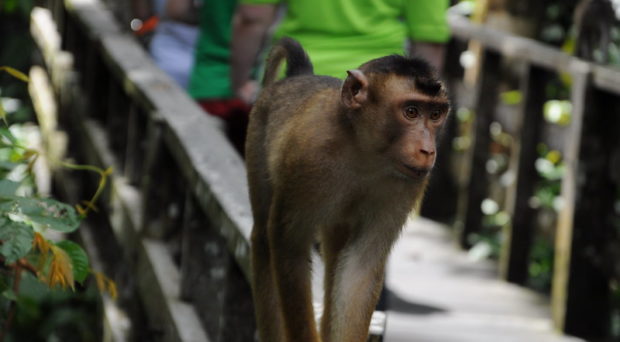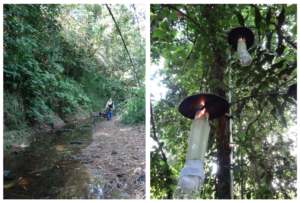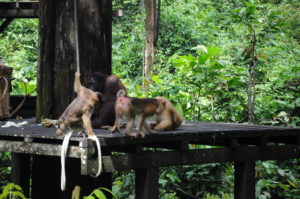Control of zoonotic malaria may be hindered by missing knowledge of its mosquitoes - BugBitten - BMC Blogs Network

In 2017, the World Health Organization South-East Asia Region committed to the elimination of malaria by 2030. In this important effort, they have been largely successful in controlling human malaria caused by species like Plasmodium falciparum and P. vivax. Zoonotic malaria on the other hand, is harder to control and impossible to completely eliminate – here, sylvatic animals play unwilling hosts for these parasites, and transmission to humans rises as we continue to enter wildlife habitats. Additionally, cases can go undetected because communities in high-risk areas can be difficult to reach, diagnose, and treat.
Malaysia, for example, has been free of human malaria transmission since 2018 (although imported cases continue to be a risk). However, there has been a rise in zoonotic malaria caused by Plasmodium knowlesi, found in non-human primates like the long-tailed macaque; approximately 2600 cases were reported in 2020. In a recent paper, researchers studied archived blood samples of Malaysian indigenous populations inhabiting forest fringes and found infections with five other simian malaria parasites: P. cynomolgi, P. inui, P. coatneyi, P. inui-like, and P. simiovale.
These parasite species have also been found in macaques from Cambodia, Indonesia, Laos, Philippines, Singapore and Thailand. Reports of human infections continue to surface, highlighting the ongoing risk of zoonotic malaria.
What information are we missing?
A review published by van de Straat and colleagues in the Malaria Journal takes a look at our current knowledge of zoonotic malaria vectors in Southeast Asia, focusing on the mosquitoes that carry P. knowlesi. It is not a short list: nine species are, with varying degrees of evidence, involved in the transmission of P. knowlesi in the region (primarily from the Anopheles Leucosphyrus group). Or at least, nine that are known so far and about which some research has been published.

Many aspects of a vector influence their relevance in disease transmission, such as their distribution, peak biting times, and sporozoite rates. Other characteristics are also significant because they help us determine high risk areas or where control might be aimed at, like their resting sites after a blood meal or where larvae are found. Despite their importance, van de Straat and colleagues found that for the vectors of P. knowlesi there is "little to no evidence" for many of these indicators. According to the review, we know that Anopheles dirus is forest and forest fringe-dwelling, likes to bite early in the evening, and breeds in freshwater pools. However, we're not quite sure where it goes to rest. An. balabacensis prefers forest fringes and plantations, and bites mostly outdoors, but it's uncertain where it rests or breeds. For many species, we don't know much about their blood feeding behaviour or insecticide resistance status, information that is crucial for control programmes.
The authors warn this is a challenge that needs to be urgently addressed in future studies.
The drivers of transmission
The review goes on to discuss studies that have found how the disturbance of sylvatic habitats through deforestation and agriculture affects the ecology of mosquito populations. One example of this is An. balabacensis, which readily adapted its breeding sites in response to forest fragmentation and rubber plantations. Additionally, higher diversity and abundance of mosquitoes has been recorded along forest edges, which can lead to increased malaria transmission. Changes in land use also determine which human populations are at risk due to an increased exposure to mosquito bites and proximity to primates – human activities have a direct effect on the behaviour of macaques, which in response to habitat fragmentation can adjust by seeking shelter around farmlands or finding food in human settlements.

Many factors make it challenging to control zoonotic malaria in Southeast Asia, such as the high biodiversity of vectors, increasing human expansion, and the difficulties in healthcare access for remote communities living in high-risk areas. As people continue to expand into sylvatic habitats, entomological monitoring remains key in the surveillance of zoonotic pathogens like P. knowlesi, especially in the context of anthropogenic land use: there is still a lot we don't know about these mosquitoes and their adaptations to ecological disturbances. This increasing transmission of zoonotic malaria presents a threat to control and elimination programmes in the region.
Comments
Post a Comment